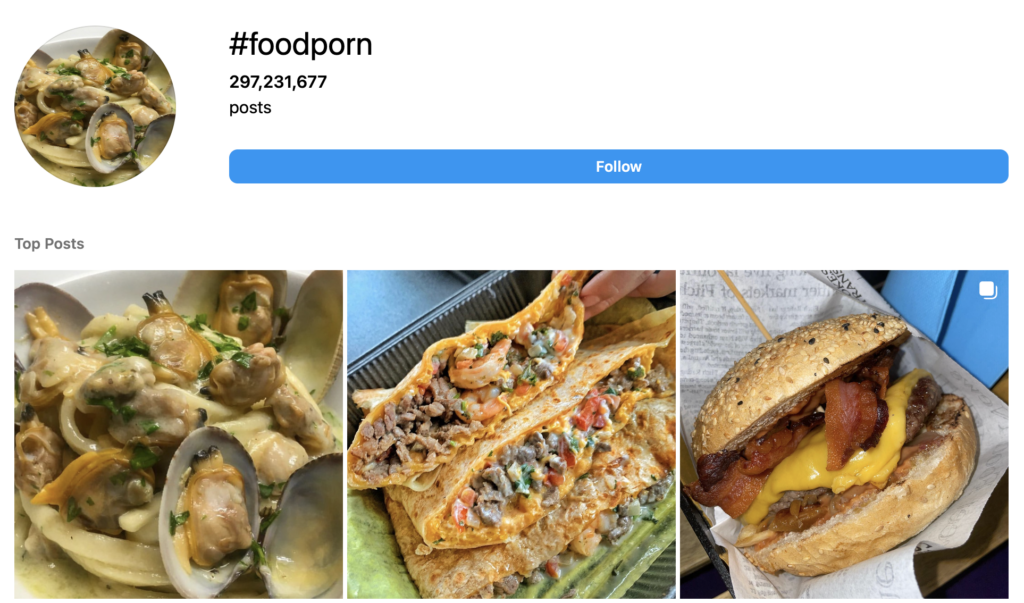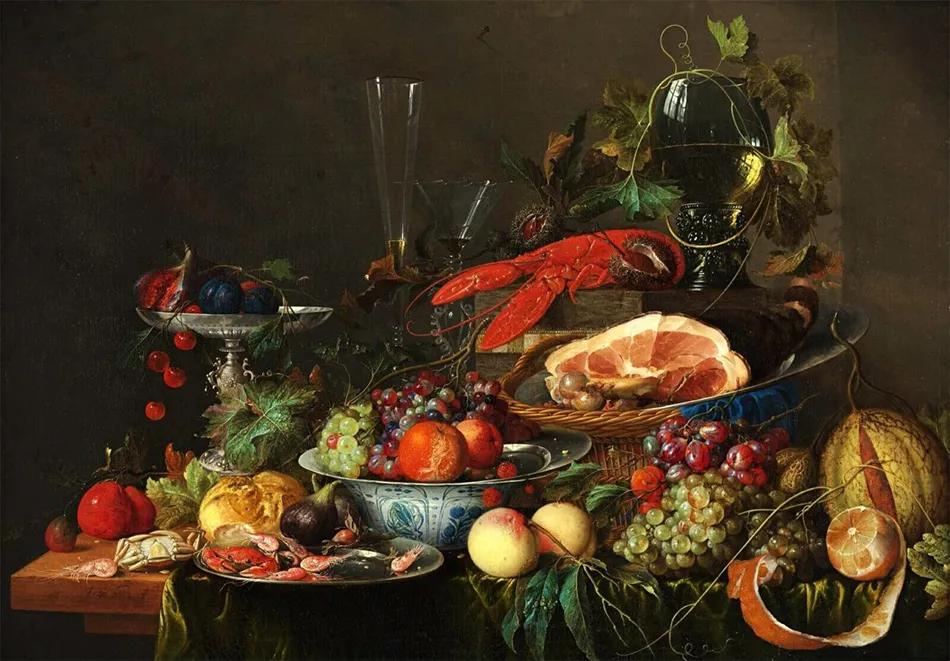Scrolling to Unhealthy Habits: How Instagram Is Making Us Eat Junk
Have you ever craved a burger after watching food porn videos? Instagram plays a big role in our dietary choices, often leading to undesirable outcomes. To avoid them, read on for the freshest insights and tips from scientists and doctors.

People used to drink coffee from tiny cups before Nescafé’s distinctive red mug promotion campaign. After the videos went viral across the globe, people’s habits began to shift, and millions of them started to pour coffee into large cups, 300ml or more.
Our eating and drinking habits are heavily influenced by what we constantly see. The frequent exposure to these videos led to a change in people’s behavior.
With the changing times, television has been replaced by social media, and viral ads have been replaced by videos and photos on social networks.
If you search the hashtag #foodporn on Instagram, you’ll discover over 297 million content pieces of delectable dishes. Most of these depict foods that are high in calories, sugar, and fat.

Junk food consumption plays a significant role in American food culture: 83% of American families visit fast food restaurants at least once a week.1
It contributes to a decline in the overall health of the population:
- Around 36% of US adults are obese.2
- Digestive troubles disrupt the daily lives of 40% of Americans.3
Among these percentages, social media plays a crucial role. Have you ever considered the health impact of scrolling through Instagram and being bombarded daily with mouth-watering photos and videos of junk and processed foods?
How you live and what you eat is affected by such exposure. But fear not because, in this article, scientists and medical professionals give you the scoop and 5 tips to navigate these challenges.
The Pleasures and Perils of Food Porn
Every day, 62,000 images are shared worldwide under the hashtag #foodporn.4 The use of this hashtag is particularly prevalent in areas with high rates of obesity.5
Food porn depicts palatable high-calorie meals and glamorizes them. Foods are presented attractively, often emphasizing their indulgent qualities. Despite appearing over-the-top to some, they are undoubtedly enjoyable to look at.
Studies prove that people are naturally attracted to visually appealing food.6 We are especially drawn to “fluid” proteins, such as dripping egg yolk or mozzarella.


In truth, #foodporn presents a one-dimensional view of food, reducing it to its appearance and neglecting factors such as nutritional value and sustainability. As a result, healthy foods that are less visually appealing are often overlooked.
Instagram Algorithms vs. Your Food Choices: Who’s Winning?
Social media networks prioritize content based on demand. The more frequently you view images of junk food, the more prominently such content will appear.
“Junk food” generally refers to meals high in calories but low in nutrients, vitamins, and minerals.7 It often contains excessive amounts of salt, sugar, and fat.
Recent research from the University of Georgia sheds light on the impact of social media posts on healthy eating habits and junk food consumption.8
Researchers examined 50,000 food photos from chefs, nutritionists, and food stylists. They found that:
- High-calorie and indulgent foods receive more likes and engagement on social media.
- Images of high-calorie meals are processed by the brain more quickly than those of low-calorie meals.
- Healthy options such as salads and fruit cups require more effort and attention to detail for prominence on social media feeds.
Speaking about eating habits, researchers from Yale University discovered that viewing food images generates false feelings of hunger.9 However, some other studies show that looking at lots of food pictures might make you less hungry.10
In any case, social media algorithms make junk food hard to resist, leaving your brain too busy to make healthy choices.
Why You’re Eating What Your Friends and Influencers Are
How often do you see your friend on Instagram happily enjoying a bowl of buckwheat or munching on a crispy cucumber? Chances are, social media feeds are flooded with posts featuring burgers, pizzas, and donuts.
Studies have even revealed that people tend to post pictures of food on their profiles more than new clothes or accessories.11


People use food to identify their social status and group affiliation. Showcasing the food you can afford signals your class position. This trend is not new – food has been depicted and used as a subject matter for centuries.

Seeing your friends and influencers constantly post junk food pictures will influence you to do the same. However, there are no mentions in stories and posts that junk food is bad for your health. Its negative medical consequences include:
- Obesity and an increased risk of developing diabetes
- Increased blood pressure, swelling, and bloating due to high salt, sugar, and fat content
- Decreased cardiovascular activity caused by high cholesterol
- Problems with the liver and endocrine system
- Increased risk of cancerous tumors12
Social media peer pressure around junk food is a real thing. Research reveals that you are less likely to eat healthier food if you see your friends and family constantly eating pizza and burgers.13
Instagram intensifies this tendency because the people you follow typically share images featuring junk food, and the algorithm promotes such content more effectively.
5 Expert Tips to Beat the Instagram Food Trap
Health Reporter expert and registered nutritionist Edibel Quintero, MD, suggests these rules to help you avoid consuming junk food after scrolling Instagram:
#1 Avoid the temptation
Avoid browsing social media feeds that contain food content, especially when you’re at home. Use app blockers or set time limits: it will reduce the temptation to indulge in them.
#2 Identify trigger foods
Make a list of your trigger foods and keep them out of your home to prevent easy access. Also, you can replace trigger foods with healthier ones. If you like potato chips, try beetroot or zucchini options instead.
#3 Wait 15 minutes
Learn to wait at least 15 minutes before eating after watching food porn content on Instagram. This will lower the chances of consuming extra calories. You can also practice mindful and slow eating, which involves paying attention to your sensations and chewing slowly.
#4 Mute and unsubscribe
Mute friends and influencers who often post junk food and subscribe to healthy lifestyle influencers instead. Add more positive, uplifting content to your Instagram feeds.
#5 Promote healthy foods
Establish a trend of posting and sharing healthy foods online, and in this way, encourage more people to adopt a nutritious diet. You can join online communities or start a wellness-focused social media account.
Conclusion
High-calorie foods tend to receive the most likes on social media, and as a result, such images quickly dominate our feeds and trigger unhealthy cravings.
Each day, thousands of #foodporn posts are published on Instagram, affecting your nutritional habits whether you want it or not. And even if you are not a fan of this content type, friends and influencers will share junk food pictures with you.
Frequently viewing such content makes our eating habits less healthy, and science backs it up. You begin to overlook food’s nutritional value and sustainability, develop false hunger, and simply eat fast food more often, considering it a regular meal rather than an occasional treat.
Indulging in food porn videos on Instagram isn’t necessarily harmful. Yet, just like in real life, the main thing is not to go overboard.
Sources
- Fast Food Statistics | March 2023 – The Barbecue Lab:
https://thebarbecuelab.com/fast-food/ - Adult Obesity – Harvard T.H. Chan School of Public Health:
https://www.hsph.harvard.edu/obesity-prevention-source/obesity-trends-original/obesity-rates-worldwide/ - Digestive Diseases Statistics for the United States:
https://www.niddk.nih.gov/health-information/health-statistics/digestive-diseases - Fetishizing Food in Digital Age: #foodporn Around the World
https://www.researchgate.net/publication/301843342_Fetishizing_Food_in_Digital_Age_foodporn_Around_the_World - #FoodPorn: Obesity Patterns in Culinary Interactions
https://www.researchgate.net/publication/273158218_FoodPorn_Obesity_Patterns_in_Culinary_Interactions - Allman, John Morgan (1999) Evolving Brains. Scientific American Library. No.68. Scientific American Library , New York, NY. ISBN 0-7167-5076-7.
https://resolver.caltech.edu/CaltechBOOK:1999.001 - Determinants of Junk Food Consumption Among Adolescents in Pokhara Valley, Nepal:
https://www.frontiersin.org/articles/10.3389/fnut.2021.644650/full - How Visual Aesthetics and Calorie Density Predict Food Image Popularity on Instagram: A Computer Vision Analysis
https://www.tandfonline.com/doi/abs/10.1080/10410236.2023.2175635?journalCode=hhth20 - Food cue reactivity and craving predict eating and weight gain: a meta-analytic review
https://onlinelibrary.wiley.com/doi/abs/10.1111/obr.12354 - Larson J. S., Redden J. P., Elder R. S. (2014). Satiation from sensory simulation: evaluating foods decreases enjoyment of similar foods. J. Consum. Psychol. 24, 188–194. 10.1016/j.jcps.2013.09.001 [CrossRef] [Google Scholar]
- Social media, body image and food choices in healthy young adults: A mixed methods systematic review
https://www.ncbi.nlm.nih.gov/pmc/articles/PMC7384161/ - Junk food: impact on health — Research Gate:
https://www.researchgate.net/publication/308384822_JUNK_FOOD_IMPACT_ON_HEALTH - What Everyone Else Is Eating: A Systematic Review and Meta-Analysis of the Effect of Informational Eating Norms on Eating Behavior
https://www.jandonline.org/article/S2212-2672%2813%2901680-8/fulltext

















































 Select your language:
Select your language: 







